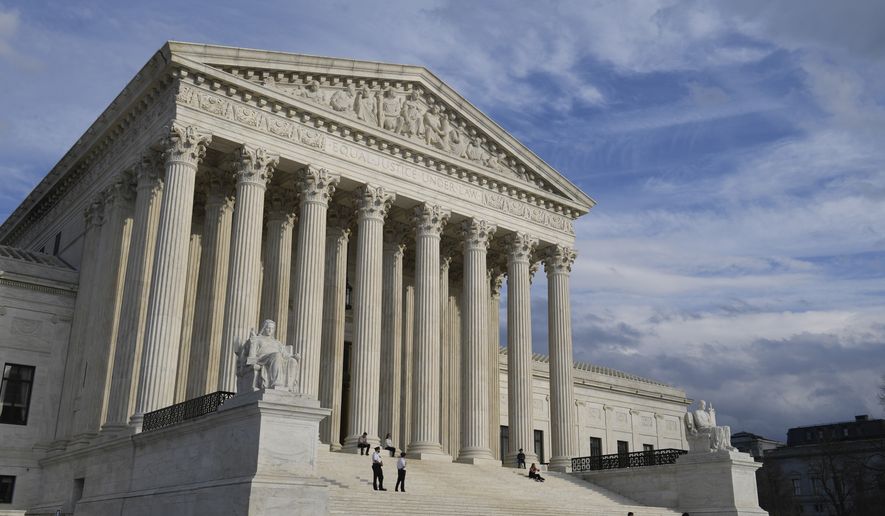The Supreme Court announced Monday that it will hear a discrimination case involving Asian students who say Harvard University’s affirmative action system discriminates against them.
The justices said they also will hear a case involving the University of North Carolina, which rewards Black, Hispanic and American Indian applicants under its affirmative action policy and which challengers say penalizes White and Asian students.
Harvard is the country’s oldest private university and UNC the oldest public university, making them marquee tests for where the high court sees affirmative action decades after the civil rights era.
Both schools say their policies work to help applicants who are underrepresented in their student bodies. But since admissions are capped, that inevitably means some White or Asian students who are more qualified don’t get into the school, says Students for Fair Admissions, the group challenging both policies.
Harvard had asked the justices not to hear the case, and university President Lawrence Bacow said Monday that in taking up the matter, the court could end up altering the makeup of student bodies at top schools across the nation. “Considering race as one factor among many in admissions decisions produces a more diverse student body which strengthens the learning environment for all,” he said in a statement.
The cases go to the heart of race-based admissions in the nation’s elite colleges, where focusing on race predominates — sometimes quite “crudely,” according to Students for Fair Admissions.
One admissions officer at UNC referred to students as “Brown babies.” In another email exchange introduced as evidence in the case, one admissions officer marveled at a strong applicant, prompting a colleague to ask “Brown?!” The first officer replied, “Heck no. Asian.”
Harvard’s latest class drew 57,786 applicants and admitted 2,320 students. Of those, the school said 16% were African American, 26% Asian American, 13% Hispanic or Latino, 1% Native American and half a percent Native Hawaiian.
UNC welcomed 5,121 students for its current school year out of 46,967 applicants. Of the new students, 18% identified as Asian or Asian American, 11% as Black or African American, 10% as Hispanic or Latino, and 4% as American Indian or Native Alaskan, the university said.
UNC said it treats race “flexibly” as part of a list of about 40 criteria.
“Thus, like any of the dozens of factors that the university considers, an applicant’s race may sometimes tip the balance toward admission in an individual case — but it almost always does not,” the school told justices.
Harvard also called its race considerations “flexible.” It said the factors come into play for “only highly qualified candidates.”
“Harvard does not discriminate against Asian-American applicants,” the school said.
Students for Fair Admissions says Harvard tracks the racial makeup of the incoming class in real time as applications are being considered, with administrators scouring the reports and urging admissions officers to correct course if key racial categories fall behind.
The case comes amid a renewed focus on Black Americans and a national debate over systemic racism and critical race theory. CRT argues for a major reexamination of laws and policies with a lens toward rooting out historic advantages of Whites.
Some proponents suggest the solution to past discrimination against Blacks is “anti-racist” discrimination against Whites.
Asians, though, are a tricky fit in conversations about race and privilege, particularly in the context of academic performance.
Students for Fair Admissions says the Harvard policies that now penalize Asians grew out of early 20th century policies meant to discriminate against Jewish applicants.
But the American Civil Liberties Union, which backs race preferences, called the challenges to Harvard and UNC “extreme.”
“Affirmative action helps to create a diverse student body and enriches the educational experience of all students, and it must remain protected by the Supreme Court,” said Sarah Hinger, a lawyer with the ACLU’s Racial Justice Program.
The Biden administration urged the justices not to take up the issue, saying there is no dissent among the lower courts. The administration also challenged whether Students for Fair Admissions was a viable plaintiff.
Lower courts have sided with both universities, finding they are in compliance with Supreme Court precedent.
The key case is Grutter v. Bollinger, a 2003 decision that upheld an affirmative action admissions policy at the University of Michigan’s law school and deemed that race can be a viable consideration, among others, if a school says it is trying to promote diversity in its student population.
Justice Sandra Day O’Connor wrote the key opinion in the 5-4 decision, saying race-based policies were allowed but only if they were not seen as indefinite.
“The Court expects that 25 years from now, the use of racial preferences will no longer be necessary to further the interest approved today,” she wrote.
Students for Fair Admissions is giving the court a chance to revisit the issue six years before her deadline.
Only Justices Clarence Thomas, a George H.W. Bush appointee, and Stephen G. Breyer, a Clinton appointee, are still on the court from that decision. Justice Breyer joined the majority, while Justice Thomas, the only Black member of the current court, wrote the chief dissent.
Justice Thomas, in a withering opinion, complained of race-obsessed “aestheticists” forcing a “cruel farce of racial discrimination” onto students unprepared for the rigors of elite schools’ curricula.
He warned of a “stigma” attaching to Black students who are admitted to schools with race-based policies.
“And the aestheticists will never address the real problems facing ‘underrepresented minorities,’ instead continuing their social experiments on other people’s children,” he wrote.
• Stephen Dinan can be reached at sdinan@washingtontimes.com.




Please read our comment policy before commenting.